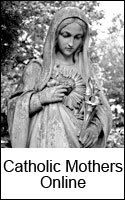
UW scientists join hunt for 'God' particle to complete 'theory of everything'
When the world's most powerful subatomic particle collider begins gathering data this summer, it will be a major milestone for a number of University of Washington scientists.
The UW, led by professors Henry Lubatti in physics and Colin Daly in mechanical engineering, played a central role in designing and fabricating nearly 90,000 tubes that are key to the workings of the Atlas detector. Atlas is one of six particle physics experiments that are part of the Large Hadron Collider at the European Organization for Nuclear Research, known as CERN, near Geneva, Switzerland.
Physicists the world over are hoping that Atlas will help unlock some deep scientific mysteries and perhaps even lead to discovery of the Higgs boson, sometimes called "the God particle" because it is believed its discovery will refine the understanding of exactly how the universe came to be and how it functions, and how mass came to be in the first place.
UW researchers are primarily involved with an Atlas subsystem that detects subatomic particles called muons. These particles have little interaction with each other or with other matter and are formed as a byproduct of the collisions between protons, the nuclei of hydrogen atoms. The collider will provide far too much data for scientists to log all of it, so the first appearance of muons can be a signal that scientists need to record information on collisions taking place at that time.
"They are like little messengers that tell us a potentially interesting event may have occurred, a signal that we should look more closely at that event," Lubatti said.
Potentially that could lead to direct evidence of the elusive Higgs boson.
"That's just one example of the detector's value," Lubatti added. "There are many other interactions that produce high-energy muons, so it is very important to be able to observe these."
The scientists are looking for other information that will help them to fill gaps in what they call the Standard Model of particle physics, a framework that explains the fundamental forces of nature. The Standard Model explains the way particle interactions create the strong nuclear force, the electroweak force and electromagnetism, and how those forces work with each other, but aspects of those interactions still are not well understood. The Large Hadron Collider also could lead to better understanding of the fourth fundamental force -- gravity -- in terms of particle interactions, and help solve the puzzle of why gravity, while perhaps most recognizable to a lay observer, is the weakest of the fundamental forces.
For entire article, go here.
* The Atlas Experiment at CERN
* Higgs boson info on Wiki
* List of subatomic particles on Wiki



















6 comments:
Didn't Douglas Adams answer the question of "Life, the Universe, and Everything" years ago? And wasn't the answer 42?
Douglas Adams, God rest his disbelieving soul, was a sage. Think of the millions that could be saved if scientists just looked for the hidden meanings in his books. Maybe if Dan Brown wrote a sequel we'd really have all the answers we've been looking for. I think the "God particle" has been hidden away in the Pope's hat all these years. Sort of like Broca's brain, but the D. Brown book would be Bene's Brain (it's what's under the Pope's hat!)
Apparently, a new Higgs-Boson could rewrite the laws of physics... c, G, pi, e... all could suddenly become different.
I think physicists are kooky.
HO:
I know one physicist that is either incredibly brilliant or a total nut case. Talks about time travel, changing that properties of matter, etc. It's all very Tesla-like stuff.
I can't remember where I saw/heard this, but apparently somebody did a study at one of the more prestigious universities. The study examined what type of profession had a greater number of believers in God (it may have been more specific than that but my memory is foggy about the details. Must be due to a lack of coffee). It turned out the greatest number of atheists & agnostics were in the liberal arts, and the greatest number of believers were scientists! And just when the Universe started making sense!
AA:
I'd be interested in seeing that study. Most of the engineers I know are conservative and most believe in God. But, then there are scientists in other fields that are strong atheists and those are the ones I'm most familiar with. Did you see Expelled? You should catch it before it isn't in theaters any more or rent it when it comes out on DVD.
Post a Comment